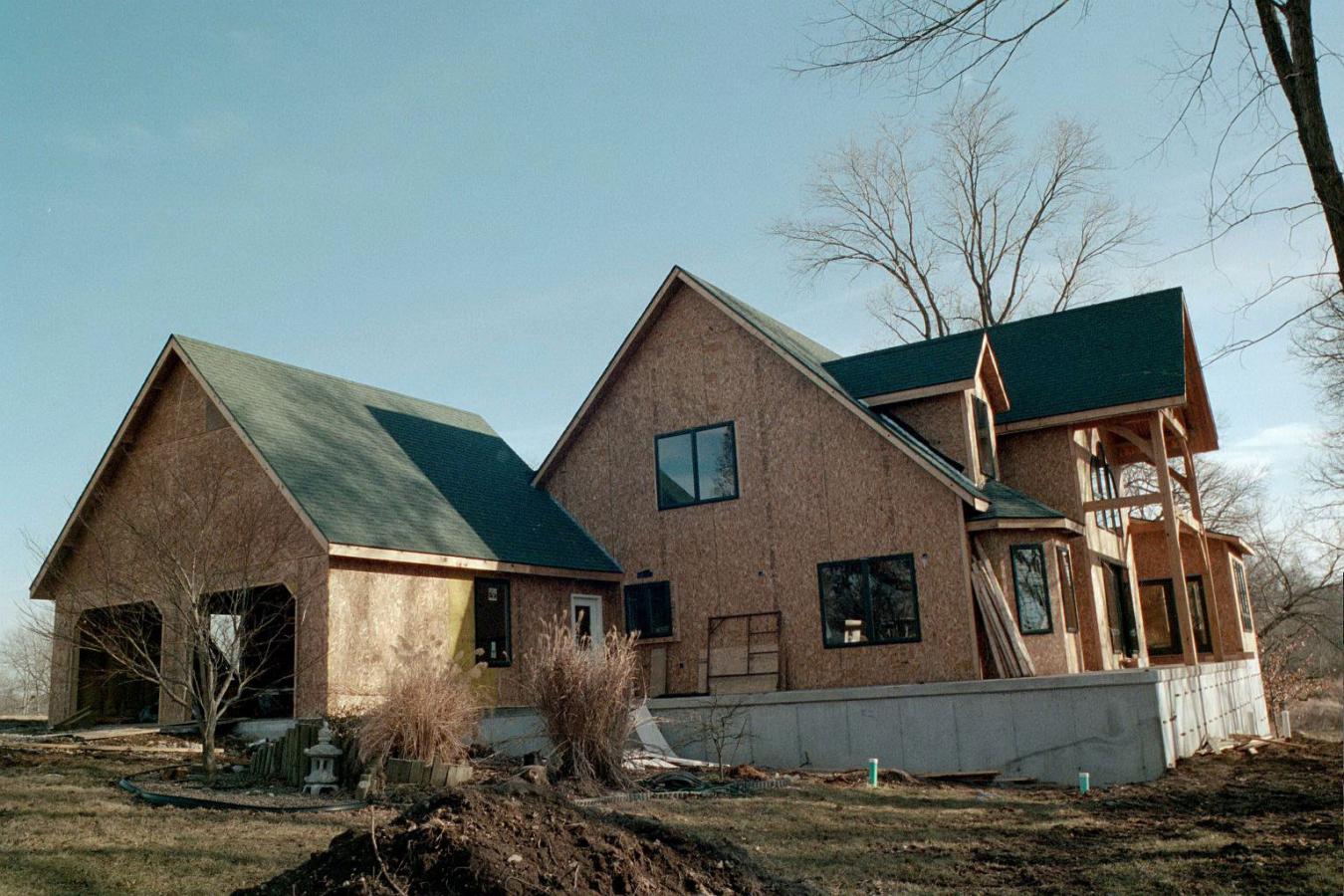
How does SIPS of America stack up against traditional stick framing?
Traditional stud framing has been the industry norm for almost 200 years! That is a long time and with all the advancements in building products in the past 100 years, I think we can all agree that it has been the norm for far to long.
Compare and discover the difference:
- R-Value – Now this is where the real savings comes in to play! SIPS of America uses a 2.2 lb./ft.3 polyurethane foam that has the highest R-value per inch (R – 7 per inch) of any insulation in the industry. SIPS of America manufactures a 4.5” panel with an R-value of R-28; compared to an R – 11 in a traditional framed wall of the same thickness using fiberglass. We also manufacture a 6.5” panel with an R-Value of R-40; compared to an R-19 in a traditional framed wall/roof of the same thickness. Higher insulation values means lower energy demands.
- Lumber Savings - There is 40 -60% less 2X lumber material when using our Structural Insulated Panels System.
- Thermal Bridging – SIPS of America building technology eliminates a majority of the 2X studs in your walls that cause “thermal bridging”. A traditional stud connects the interior of the structure to the exterior of the structure, creating a “bridge”, allowing thermal transfer through the stud due to the fact that 2X lumber has a very low R-value (Approx. R- .5 per inch).
- Air Infiltration – This occurs in traditional framing most commonly around the perimeter of the exterior sheathing. SIPS of America uses polyurethane insulation that self-adheres to the sheathing to prevent air leakage. We also use foam gaskets at all the panel seams to eliminate air infiltration. This has been proven in numerous blower door tests to prevent up to 80% less air infiltration than traditional stick framing.
- Air Quality – Since traditional stick framed homes have a great deal of air leakage, there usually is no need to mechanically ventilate or exchange the air in the home. This is a very different situation with a SIP structure. Due to the air tightness of the a SIP home we do recommend that you have an Energy Recovery Ventilation(ERV) system in your Heating and Cooling system in order to exchange the stale air with fresh air. For more info, please feel free to contact us at SIPS of America and we can explain all the benefits of an ERV.
- Strength – SIPS of America provides a wall system that has been tested to be considerably STRONGER than any traditional wood framed wall system.
- Vapor Barrier – Traditional homes require vapor barriers such as poly sheeting to be applied over your insulation to prevent moisture from transferring through your home’s exterior walls. SIPS of America uses a closed cell polyurethane foam, tapes, and gasket seals in our system that create a superior vapor barrier, so no additional vapor barriers are needed.
- Site Labor Savings – Saving Time, Saves you money! SIPS of America panel systems require up to 60% less site labor when compared to stick framing. This is due to the time it takes for framing, insulating, sheeting, and electrical box placement.
- Downsizing Heating and Cooling System – With SIPS of America’s superior insulation value, reduction of air leakage, and elimination of thermal bridging, you can also downsize your heating and cooling system. In most cases your HVAC contractor can reduce your system by 25% when compared to traditional framing. It is imperative that they down size the unit because it will allow your HVAC system to run and operate the way it was designed. Oversizing your HVAC is never a good idea.
- Fire Rating - SIPS of America uses a Class A/1 Fire Rated polyurethane foam insulation that is superior over fiberglass batts, polystyrene, and other insulations traditionally used in stick frame construction.
- Tax Credits – SIPS are an Energy Star™ rated product and may qualify for tax credits through government or local municipalities.
Physical Properties
- Insulation Core Thickness:
3 ½” structural wall and 5 ½” roof polyurethane, 2.2 lb. density, Class I,
closed-cell foam. No formaldehydes, CFCs, or HFC’s are contained in this product. - Inner/Outer Skin:
7/16" oriented strand board (OSB) is a structural, exterior-rated composite board. - Adhesion:
Injected foam expanding into the two skins under pressure insures a superior bond, making these
composite panels some of the strongest in the industry. - Overall Thickness:
Structural wall 4 ½” or 6 ½”, Structural roof 6 ½” - Structural Properties of Foam:
Compressive Strength: 26 psi
Tensile Strength: 18 psi
Shear Strength/Modulus: 22/300 psi
Porosity: 95% - Fire Safety:
Foam Fire Rating: Class I
Flame Spread: 20 (ASTM E-84)
Smoke Developed: 300 (ASTM E-84)
Structural Integrity in Fire: Polyurethane foam is a thermoset plastic which does not melt. It
maintains structural integrity until consumed.
